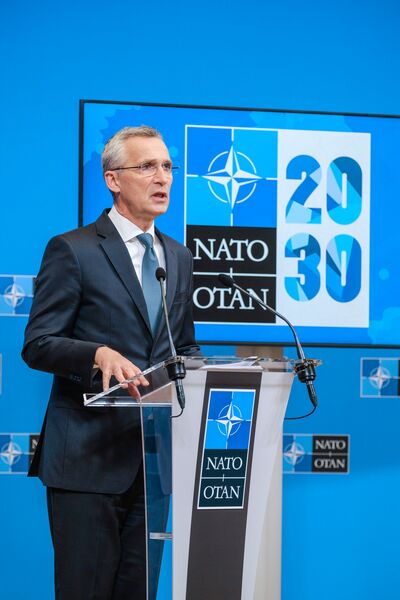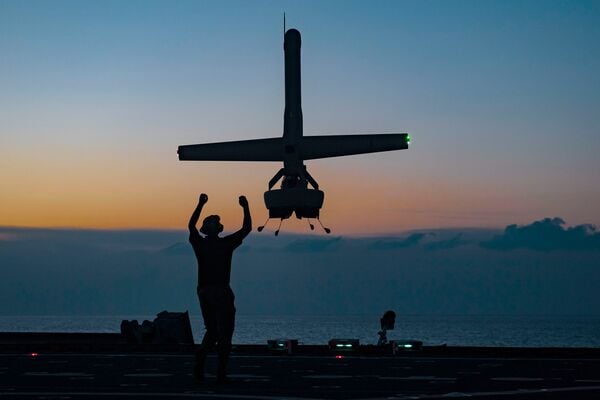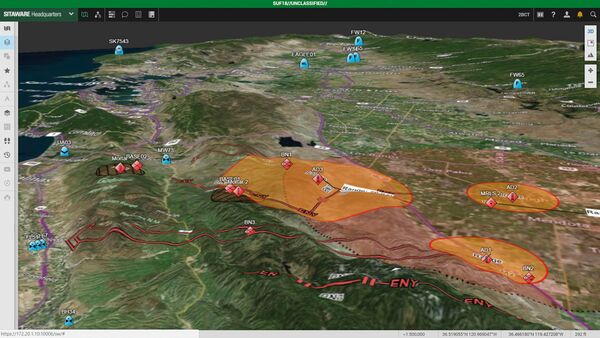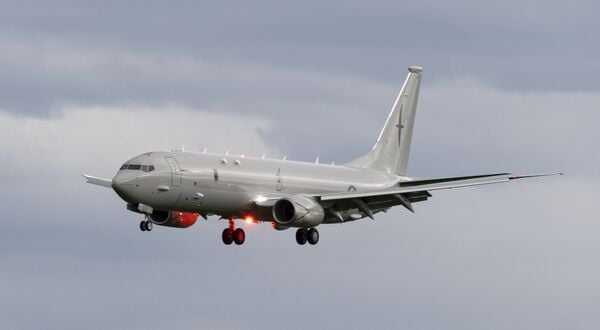- About
- Intara
- Capabilities
- Advisory
- Resources
- News
- Store
NATO leaders set to launch new ‘defence innovation accelerator' at summit
02 June 2021
by Brooks Tigner
NATO leaders will consider two controversial proposals during their 14 June Brussels summit: increasing the alliance's common funding and creating a ‘defence innovation accelerator' to rapidly develop and absorb emerging disruptive technologies (EDTs) into their militaries. The two agenda topics, among others, were decided by NATO foreign and defence ministers meeting in Brussels on 1 June.

Stoltenberg expects allied leaders to decide in principle on a new innovation accelerator at their 14 June Brussels summit. (NATO)
“We need to sharpen our technological edge because we see that disruptive technologies are really changing the way our militaries are going to have to operate in the future,” NATO Secretary-General Jens Stoltenberg told reporters after the meeting, adding that the accelerator “will help prevent any [EDT] gaps between the allies.”
He said the leaders should reach a decision “in principle” on the idea, leaving the details of where to site the accelerator, its rules of governance, and other aspects to be worked out after the summit. They will also clarify that allies can opt in or out of the accelerator by providing extra funding for it, he said.
Navy League 2024: Unmanned surface and aerial vehicles move from experimental to operational considerations
16 April 2024
by Michael Fabey


The V-Bat UAV, shown here during testing, is becoming the UAV of choice for US forces. (US Navy)
Military planners and operators are beginning to consider unmanned surface and aerial vehicles in a more operational light given recent successes in experiments and in the battlespace, according to defence analysts.
One case in point is the Long-Range Unmanned Surface Vessel (LRUSV) the US Marine Corps (USMC) plans to use as a semi-autonomous vessel for extended travel and transporting loitering munitions that accurately track and destroy targets on sea or land and serve as an intelligence, surveillance, and reconnaissance (ISR) platform, according to Bryan Clark, senior fellow and director of the Center for Defense Concepts and Technology at Hudson Institute.
“Marines are looking at that for unmanned logistics,” Clark told Janes on 31 March in an interview in advance of the Navy League Sea-Air-Space global maritime exposition held from 8 to 10 April in National Harbor, Maryland.
“They want to move materiel between the islands for the MLRs [Marine Littoral Regiments],” Clark said.
NATO selects SitaWare as primary C2 system for land operations
11 April 2024
by Olivia Savage


NATO has selected SitaWare HQ as its primary C2 software for land operations. Pictured is a screenshot visualising SitaWare HQ's geographic information system. (Systematic)
Systematic's SitaWare Headquarters (HQ) software has been selected by NATO as its primary command-and-control (C2) solution for land operations.
The software, selected as part of a EUR28.21 million (USD30.47 million) contract, aims to provide the Future Land Command and Control (FLC2) system (Demeter), supporting NATO land forces at strategic and operational levels.
The system is replacing NATO's current Land Command and Control Information System (LC2IS), which has been in service since 2008.
According to a NATO invitation to tender (ITT) published on 3 March 2023, the software selected must be a commercial off-the-shelf (COTS) solution that has already been proven in NATO exercises/operations. It will be required to provide a recognised ground picture, support battlespace management, and facilitate the exchange of information and knowledge across operational domains within the NATO Command Structure (NCS), NATO Force Structure (NFS), and for NATO countries.
Preliminary system acceptance is expected in December 2024 and final system acceptance by February 2026, the ITT detailed.
New Zealand plans P-8A deployment to enforce North Korea sanctions
10 April 2024
by Akhil Kadidal


The planned deployment of an RNZAF Boeing P-8A Poseidon to Japan in mid-April 2024 to participate in the enforcement of sanctions against North Korea, is the sixth such RNZAF deployment since 2018. (New Zealand Defence Force)
New Zealand has said that it will deploy a Boeing P-8A Poseidon maritime patrol aircraft to Japan for the first time in support of UN Security Council (UNSC) sanctions on North Korea and assist with the monitoring and surveillance of illegal ship-to-ship transfers by Pyongyang.
The deployment will see the P-8A conduct maritime surveillance and reconnaissance patrols “over international waters looking for violations of the sanctions resolutions, including illicit ship-to-ship transfers of banned goods such as oil and coal”, said Rear Admiral Jim Gilmour, commander of the Joint Forces New Zealand, on 10 April.
According to the Japan Ministry of Defense (MoD), the Royal New Zealand Air Force (RNZAF) P-8A will operate from Kadena Air Base in Okinawa from mid-April to early May.
The deployment comprises several “firsts” for the RNZAF's P-8As, according to the Air Component Commander, Air Commodore Andy Scott.
NATO leaders will consider two controversial proposals during their 14 June Brussels summit: increas...
Latest Podcasts
Iran Israel analysis
In this podcast Janes analysts discuss the Iranian attacks on Israel on the 14 April. They highlight the military systems used by Iran and the performance and impact of these on Israel. They also discuss the implications of this attack goi...
Listen nowJanes Case Studies
Using Janes Intara to build a common intelligence picture: Russian build up on the Ukrainian border
View Case StudyNews Categories
 Security Details
Security Details